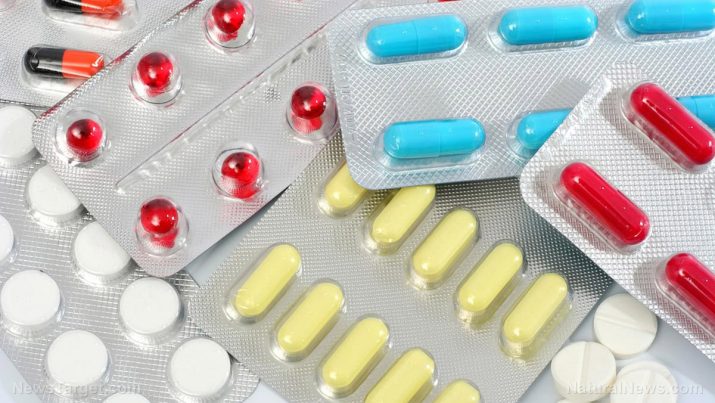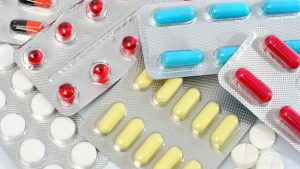
Chlorpropamide – uses, health risks, and side effects at NaturalPedia.com
Thursday, August 16, 2018 by Michelle Simmons
http://www.naturalpedia.com/chlorpropamide-uses-health-risks-and-side-effects-at-naturalpedia-com.html

Chlorpropamide is typically prescribed for the treatment of Type 2 diabetes. This drug belongs to a class of medications known as sulfonylureas. Chlorpropamide reduces blood sugar level by stimulating the pancreas to produce insulin and helping the body utilize insulin efficiently. However, this drug will only help reduce blood sugar in people whose bodies produce insulin naturally. Therefore, it cannot be used to treat type 1 diabetes, a condition in which the body does not make insulin, or diabetic ketoacidosis, a serious condition that may develop if high blood sugar is not treated.
Chlorpropamide is used together with diet and exercise. In some cases, it is also used together with other medications for diabetes. It comes as a tablet that is orally taken with breakfast once a day.
The drug is also known by the brand name Diabinese.

Known side effects of chlorpropamide
Chlorpropamide comes with many side effects. The common side effects that chlorpropamide can cause include the following:
- Low blood sugar
- Mild hunger or loss of appetite
- Nausea, vomiting, diarrhea
Some side effects of chlorpropamide can be serious, which may require immediate medical attention. These include the following:
- Allergic reaction with symptoms such as hives, difficulty breathing, swelling of your face, lips, tongue, or throat.
- A light-headed feeling, like you might pass out
- A throbbing headache, sweating, severe nausea, trouble breathing, fast or pounding heartbeats, blurred vision, spinning sensation
- Easy bruising or bleeding, pale skin, fever, and unusual weakness
- Liver problems with symptoms such as nausea, upper stomach pain, itching, tired feeling, loss of appetite, dark urine, clay-colored stools, and yellowing of the skin or eyes
- Severe skin reaction with symptoms such as fever, sore throat, swelling in your face or tongue, burning in your eyes, skin pain, followed by a red or purple skin rash that spreads (especially in the face or upper body) and causes blistering and peeling
- Trouble concentrating, memory problems, and hallucinations
Body systems that may be harmed by chlorpropamide
The body systems that may be harmed by chlorpropamide include the digestive, cardiovascular, and respiratory systems.
Food items or nutrients that have similar effects to chlorpropamide
The following food items and herbs work similarly like chlorpropamide:
- Antioxidant foods, such as berries
- Foods rich in omega-3 fatty acids, such as salmon
- High-fiber foods, such as beans and whole grains
- Non-starchy vegetables, such as broccoli and peppers
- Protein-rich foods, including lean meats, fish, and nuts
- Sweet potatoes, which are lower glycemic index than other potatoes
- Unsweetened teas
- Water, especially as a substitute for sweetened drinks
Treatments, management plans for chlorpropamide’s side effects
- Nausea, a common side effect of chlorpropamide, can be treated and managed by: drinking plenty of water; eating plain foods; breathing in a lemon; eating ginger; drinking herbal teas; breathing in peppermint oil; trying acupressure; taking enough rest.
- Diarrhea, also a common side effect of chlorpropamide, can be treated and managed by drinking plenty of water and eating a bland diet.
- Loss of appetite can be treated by eating nutrient- and calorie-dense foods, such as avocados, bananas, dried fruit, sweet potatoes, white potatoes, peas, eggs, hummus, cheese, pudding, nuts and nut butter, whole-grain bread and bagels, grape nuts, quinoa, and raisin bran.
Where to learn more
- Chlorpropamide side effects, nutrient depletions, herbal interactions and health notes:
- Diabetes drugs warning: they cause heart problems
- Risks of sulfonylurea drugs in the treatment of diabetes mellitus (press release)
- Diabetes Drugs Killing You? 7 Substances That Could Reverse Type 1 Diabetes Naturally
- Combination of Prescription Diabetes Drugs Boosts Risk of Cardiovascular Death
Summary
Chlorpropamide is used for treating type 2 diabetes.
Chlorpropamide is used in combination with diet and exercise.
Chlorpropamide’s common side effects include low blood sugar, loss of appetite, nausea, vomiting, and diarrhea.
Berries, salmon, beans, whole grains, broccoli, and peppers work like chlorpropamide.
The side effects of chlorpropamide can be treated by drinking plenty of water and eating nutrient- and calorie-dense foods.
Sources include:
Tagged Under: Tags: Chlorpropamide





